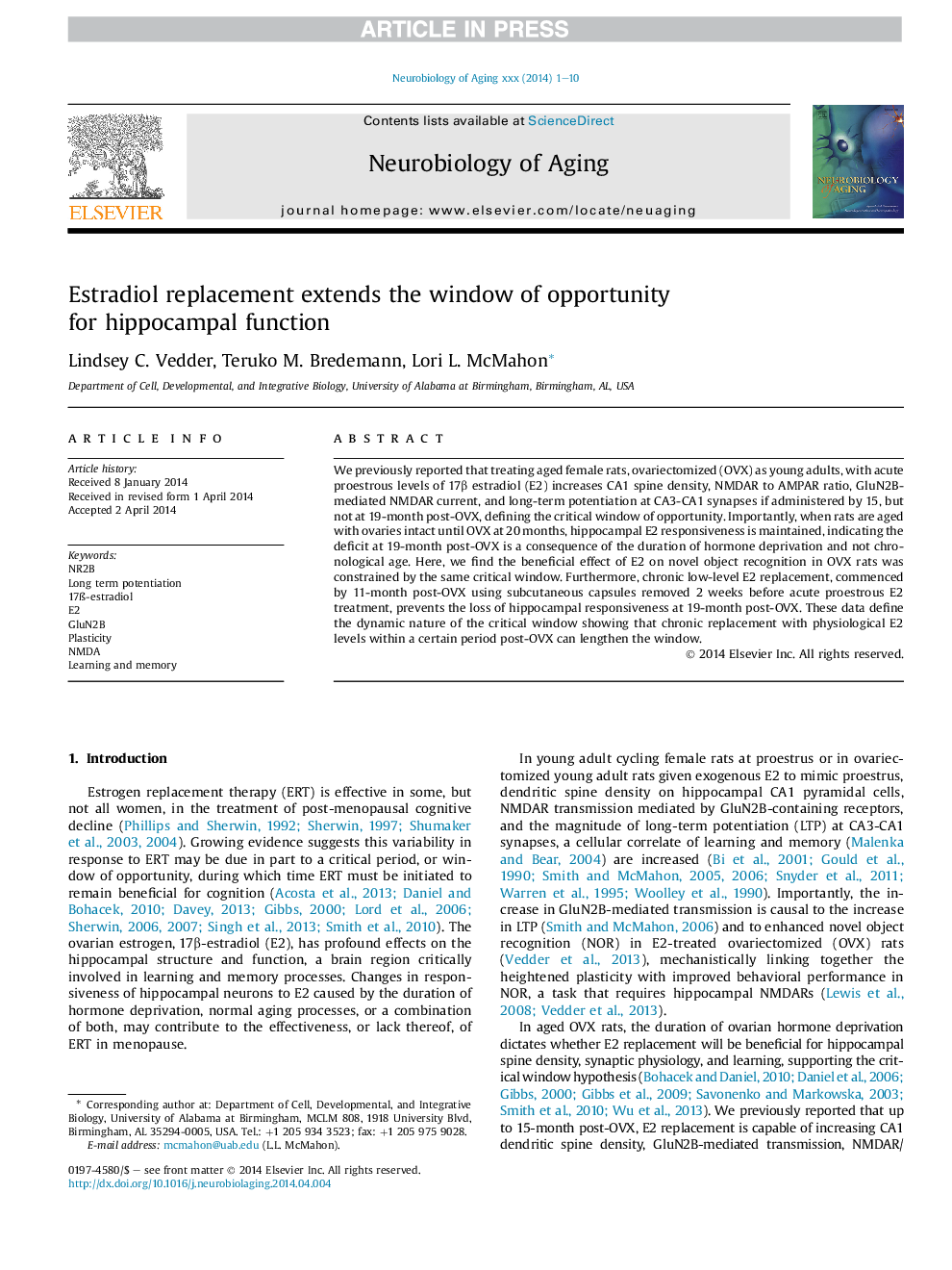| Article ID | Journal | Published Year | Pages | File Type |
|---|---|---|---|---|
| 6805488 | Neurobiology of Aging | 2014 | 10 Pages |
Abstract
We previously reported that treating aged female rats, ovariectomized (OVX) as young adults, with acute proestrous levels of 17β estradiol (E2) increases CA1 spine density, NMDAR to AMPAR ratio, GluN2B-mediated NMDAR current, and long-term potentiation at CA3-CA1 synapses if administered by 15, but not at 19-month post-OVX, defining the critical window of opportunity. Importantly, when rats are aged with ovaries intact until OVX at 20 months, hippocampal E2 responsiveness is maintained, indicating the deficit at 19-month post-OVX is a consequence of the duration of hormone deprivation and not chronological age. Here, we find the beneficial effect of E2 on novel object recognition in OVX rats was constrained by the same critical window. Furthermore, chronic low-level E2 replacement, commenced by 11-month post-OVX using subcutaneous capsules removed 2 weeks before acute proestrous E2 treatment, prevents the loss of hippocampal responsiveness at 19-month post-OVX. These data define the dynamic nature of the critical window showing that chronic replacement with physiological E2 levels within a certain period post-OVX can lengthen the window.
Related Topics
Life Sciences
Biochemistry, Genetics and Molecular Biology
Ageing
Authors
Lindsey C. Vedder, Teruko M. Bredemann, Lori L. McMahon,
